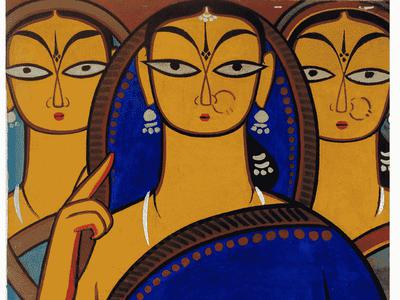For Jamini Roy was the First
When a retrospective of Jamini Roy opened in Bombay in 1980, art historian Yashodhara Dalmia wrote in The Times of India about his lifelong search for an authentic Indian form, deeming him the ‘first contemporary painter’. Moving away from academic realism, Roy drew on Bengal’s folk and tribal traditions to create a new visual language that was both modern and rooted in shared cultural sensibility.
Read More


















